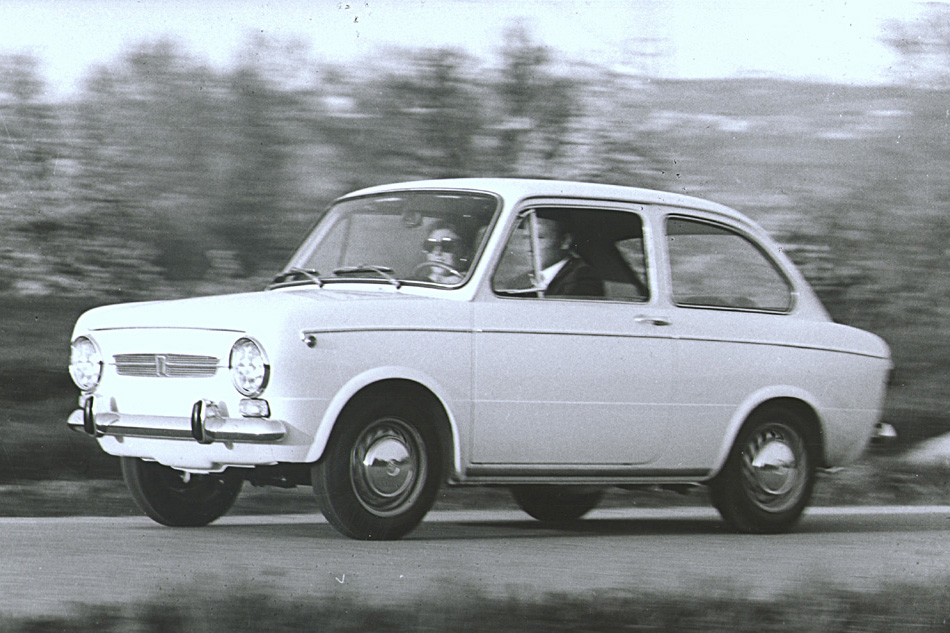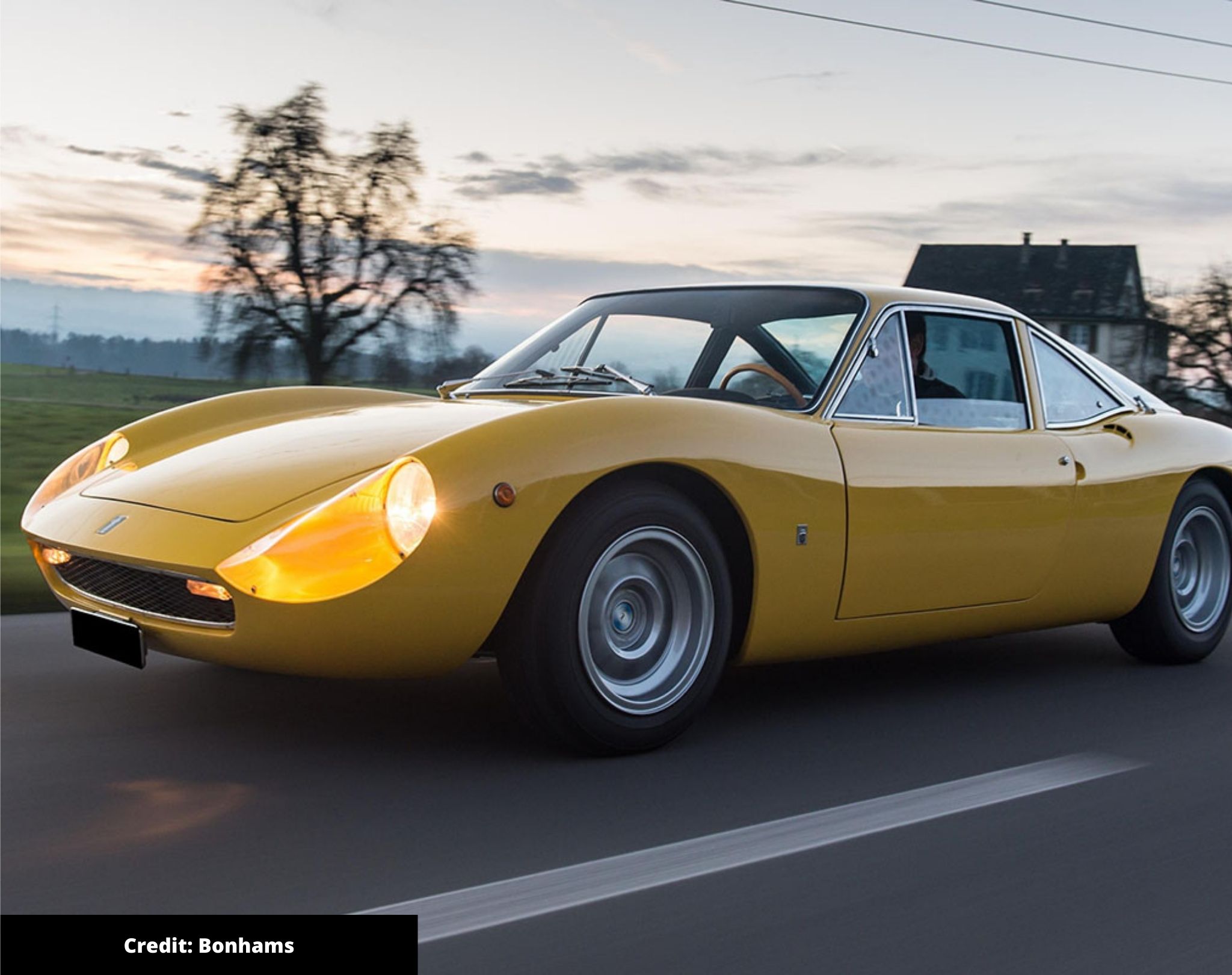Star cars of 1964
Any year that brought us the Ford Mustang, Pontiac GTO, Porsche 911, and Sunbeam Tiger is sure to be a classic. Yet, 1964 offered even more variety and interest than even these performance icons, so let’s delve into this landmark year and see what else there is for classic car fans.
Where better to start than Ferrari? After the dominance of the 250 series cars in the company’s road and race ranges, 1964 witnessed the arrival of the 275. In some ways a stopgap between the 250 and Daytona, the 3.3-litre 275 turned out to be one of Ferrari’s all-time greats. Its powerful, smooth V12 motor endowed it with true 150mph performance, while the Pininfarina looks were just right from every angle. There are subtle differences between the four-cam GTB/4 models, long nose variants and GTS open-tops, but all 275s rank as blue-chip classics then and now.
Another Italian looking to wow the world in 1964 was the rather more humble Fiat 850. It used the same rear-engined layout as the earlier 600 and 500 models, but with an 843cc four-cylinder engine. There was decent space inside for a family of four and the 850 was affordable for most. However, what was remarkable about this simple car, that went on to sell 1.7 million units, was its handling. It could be hustled round corners to make its driver feel every bit as special as those at the wheel of a Ferrari 275.

More sporting fun emerged from Italy in 1964 in the shape of the featherweight De Tomaso Vallelunga and ASA 1000 GT. Both were petit and pretty, and both were made in penny numbers to make them very desirable now. Also from Italy was the Bizzarrini Strada, which was designed by former Ferrari employee Giotto Bizzarrini after he fell out with Enzo Ferrari. To create his low-slung super GT, he used the engine from a Corvette with 365bhp on tap, which was enough to raise eyebrows if not sales – the Strada ended life after 149 cars were built.

Elsewhere in the world, the winds of change were blowing as the Austin 1800 arrived in the UK. It was the first family car to follow in the footsteps of the Citroen DS by using front-wheel drive and linked suspension. However, the ‘Landcrab’ as it became known went one better than its French inspiration with a transversely mounted engine. This made the 1800 essentially like a giant Mini and it was spacious and very comfortable. However, the 1800 was a bit dull, which meant it missed out on sales to some more conventional but sharper styled rivals.

One such rival was the Ford Corsair, which cleverly filled a niche between the Cortina and larger Zephyr. Its wedge nose was similar to Ford Germany’s Taunus, while V4 engines added some mechanical glitz and decent power. Not as refined as an Austin 1800, the Corsair still pulled in the crowds with its looks and a cabin that was more upmarket than a Cortina’s.

Ford had other new models up its sleeve for 1964 in the USA. While that original Mustang sold like ice-cream on a hot day at the beach, those seeking a bit more opulence could choose the LTD. This full-size model could be had a saloon, coupe, convertible, or station wagon estate with a selection of V8 engines. As a measure of how on the pulse of US buyers’ wants Ford was, all of its major rivals responded quickly with similar high-spec, full-scale cars.

As an alternative to the Mustang, Plymouth offered its Barracuda, which went well but didn’t really get into its styling stride until the second-generation model in 1967. More US performance car buyers were tempted by the Pontiac GTO if they didn’t fancy a Mustang. The GTO oozed menace and, with up to 348bhp on offer, it had the legs to match the looks.

On both sides of the Atlantic, buyers could pick a more compact kind of muscle car with the Sunbeam Tiger. This Rootes made upgrade of the Alpine sports car used a Ford V8 motor, initially in 4.2-litre capacity and then 4.7-litres. These were the same engines as the AC Cobra had, which is no coincidence as the Tiger was the brainchild of none other than Carroll Shelby. Not quite as rabidly quick as the Cobra, the Tiger was still potently fast and went on to prove itself very able in competition.

Porsche got its recently revealed 901 into showrooms in 1964 and had to change the car’s name to 911 after Peugeot claimed rights to model three digits names with a zero in the middle. Not a problem for the German firm as the 911 was soon racking up sales and wins on track and rally stage across the world.

For sports car buyers not able to stretch to a Porsche 911, there were other options. For instance, you could have sought out the tiny buy perfectly engineered Honda S600 with its 606cc motorcycle-derived engine that revved to an unheard of 8,000rpm. Or, you might have been more persuaded by the Reliant Scimitar coupe with its straight-six Ford engine and clean lines. It was a good car, but it took until the groundbreaking estate GTE version arrived in 1968 before this car really took off.
For the more adventurous, there was Marcos’ new coupe that came with a choice of 1.5- and 1.6-litre Ford engines, or a 1.8-litre Volvo motor. The sleek looks were by Dennis Adams and made the Marcos far more aerodynamic than most other cars in its class, which helped with performance and top speed. This made the Marcos appealing to a select group of buyers.
Skoda took a more populist approach with its 1000MB saloon of 1964. It stuck with a rear-engined, rear-drive layout, but this made it a formidable force in rallying thanks to excellent traction on loose surfaces. In more mundane daily duties, the 1000MB was reliable and Skoda shifted more than 1.2 million of them, mostly in Eastern Europe but some in the UK.
All of these cars, and several more besides, made 1964 a vintage year for new cars, and it has left a lasting legacy for classic fans to enjoy today.
Do you have a story to tell about one of these cars or perhaps you have another classic from 1964 that didn't make our list? Share it with us in the comments below.

In 1963, Bizzarrini was still working with ISO, and the car that was launched was the ISO Grifo A3/C. Later, after Giotto Bizzarrini went his own way, the Strada was made based upon the A3/C but updated.
Peter, 16/03/2024
COMMENT